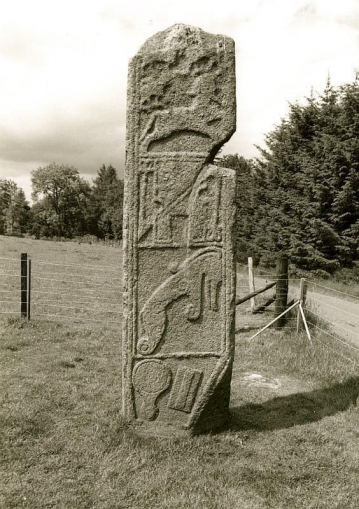The Laird's daughter turned into the Maiden Stone to save her from the Devil
The Picts were a Celtic society of farmers and hunters. The remains of Pictish art, language and society can be found throughout north and eastern Scotland. Their carved stones are both mysterious and beautiful. One such is the Maiden Stone, also known as the Drumdurno Stone close to the village of Chapel of Garioch near Inverurie (Scottish Gaelic: Inbhir Uraidh) in Aberdeenshire. This beautiful Pictish cross slab, carved in pink granite, is thought to date from the late 8th or 9th century AD. The stone stands about ten feet tall, three feet broad, and six inches thick and is carved with a number of pre-Christian and Christian symbols including a mirror and comb and a Pictish beast or dolphin. Down either side of the stone are interlace patterns. On one side is a cross below which there is a square panel with a disc containing a Celtic spiral motif. It has some damage notably a triangular notch two thirds up the right-hand side.
The standing stone is steeped in legend. One such is that it is the daughter of the Laird of Balquhain who was turned to stone by God on her wedding morning to save her from the devil. It is said that she made a bet with a stranger that she could bake a bannock faster than he could build a road to the top of the of the 1600ft summit of close-by Bennachie. Should he win then she would be obliged to marry him. The maiden thought it an impossible task to build such a road so quickly. However, the stranger was the Devil and finished the road. He then sought to make true on the forfeit. Horrified the maiden ran from the Devil praying to be saved, at which point God turned her to stone. However, the notch that can be seen on the stone today is where the Devil grasped her shoulder as she ran. Interestingly there is evidence of a paved road leading to the summit of Bennachie. Known, of course, as the Maiden Road.






